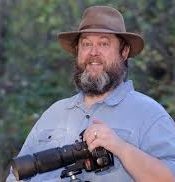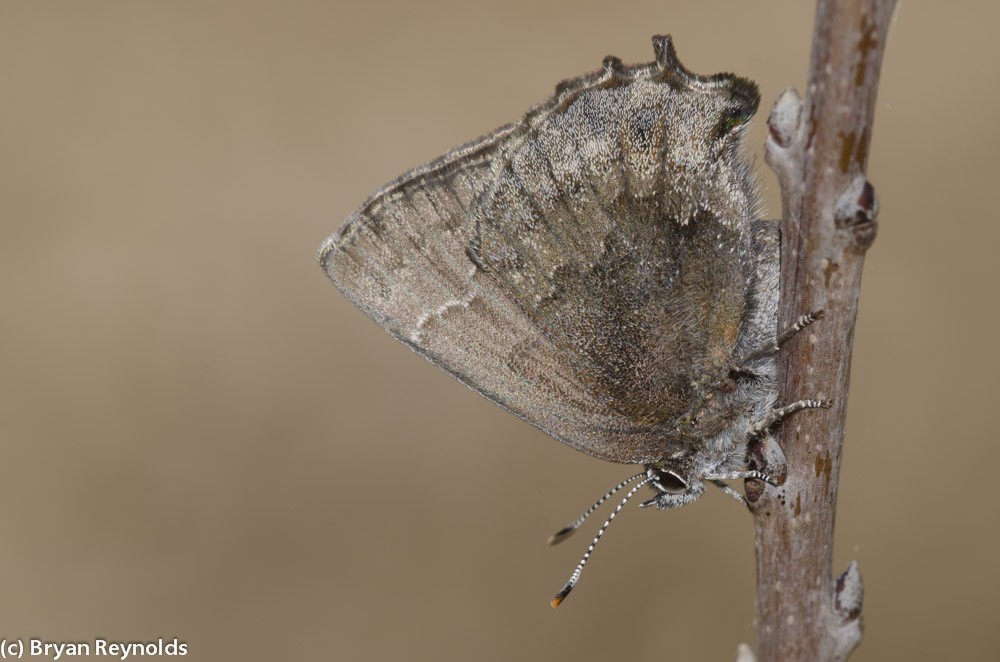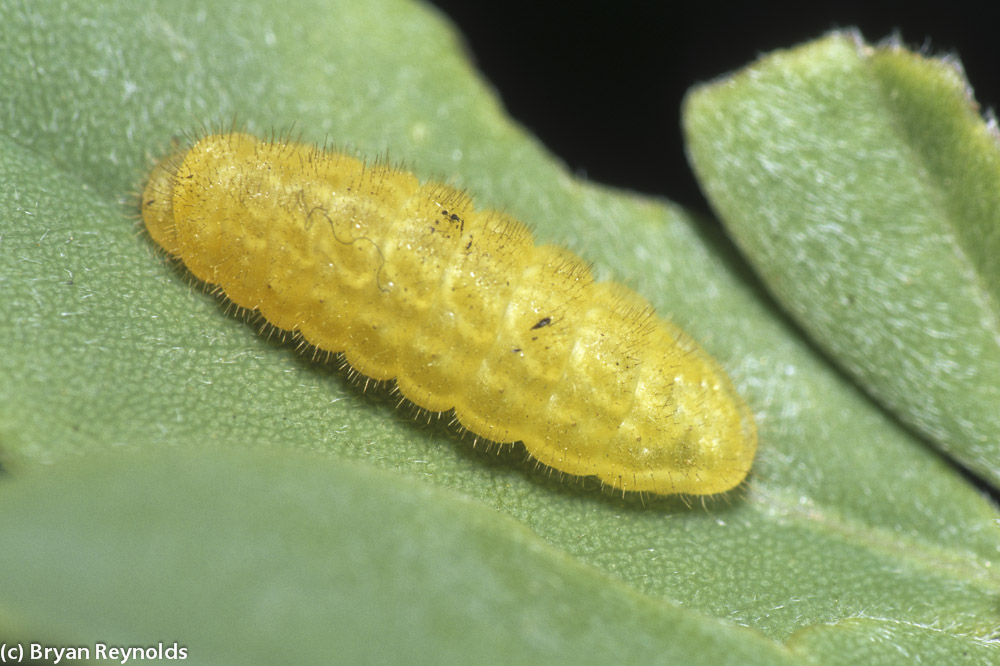
BRYAN REYNOLDS
Nature Photographer and Founder of The Butterflies of the World Foundation
Spring is just around the corner and fresh butterflies should be emerging very soon. One of those, the frosted elfin (Callophrys irus), is not as well-known as other species such as monarchs or painted ladies. But, this species may be in decline, and experts from the Oklahoma Biological Survey at the University of Oklahoma are very interested in the status of this butterfly within the state.
The frosted elfin is a type of hairstreak belonging to the butterfly family Lycaenidae. It is small, with a wingspan not much wider than a thumbnail. It is mostly brown with very subtle markings and a frosted edge on the ventral hindwing. Like most hairstreaks, it sits with wings closed.

Most people might dismiss it as just a brown moth, but its beauty becomes apparent when it can be observed up close where its delicate frosted wings can be appreciated.
If you want to observe this butterfly yourself, you have to consider a few things. First, it is a very early-in-the-season flyer. In Oklahoma, adults start to emerge at the end of March and the flight is over in just a couple short weeks, ending in mid-April. There is only one adult brood, so if you miss them, you’ll have to wait until the next year to try again. Early spring in Oklahoma can be a tough time to find these butterflies, because the weather can fluctuate with late freezes and early warm spells.

Besides weather concerns, another major factor in locating the frosted elfin, is finding its larval food plant. Frosted elfins are never found far away from their caterpillar food, and in Oklahoma the only documented host is yellow wild indigo (Baptisia sphaerocarpa). However, the frosted elfin survey crew in neighboring Arkansas found several colonies of the butterfly utilizing a related plant, Nuttall’s wild indigo (B. nuttalliana). Both of these species of indigo are very conspicuous, but only when in bloom. Unfortunately, by the time the flowers are opening, the adult butterflies have already finished flying, and then only caterpillars can be searched for. Finding tiny caterpillars requires a meticulous search among the leaves and flowers of the indigo. Or, the other option is to document the location of the plants, and then return the following spring to look for adults.

Historically, the frosted elfin has been found in the southeastern quarter of the state, starting from Murray County then southward to the Texas border and then east to Arkansas, encompassing 14 counties. This is a lot of ground to cover within the short window of the adult flight and makes it difficult to find new colonies. This brings us to how you can help:
- The survey region is large and we need help finding the plants. Yellow wild indigo likes to grow in disturbed areas such as pastures, fence lines, along roadsides, powerline cuts, etc., and is found throughout the study region. Nuttall’s wild indigo is found in the southeast part of the state and then up into the Kiamichi and Ouachita Mountains. If you see large patches of either plant, please contact us.
- If you find any patches of the two species of indigo, and you would like to search for the butterfly, please do! Remember they are tiny butterflies, so think small and look low. If you spot an adult, please try to get a photo of it. If not, that’s okay, but please let us know where you spotted it
- If you’re really determined, you can search for caterpillars. If searching for them on yellow wild indigo, the caterpillars are a lemon yellow color. If on Nuttall’s indigo, they are green. Both color varieties are very small and slug-like in appearance. Mature caterpillars will be out at the end of April into the beginning of May. Again, please try to snap a photo, even if the critter is small in the frame, we should hopefully be able to tell if it is a frosted elfin
- Pass the word. If you know anyone who would be interested in helping, please let them know.
Here’s my (Bryan Reynolds) email: nature_photo_man@hotmail.com to email sightings or ask questions. Also, below are two websites to provide more information:
Bryan Reynolds is a professional nature and wildlife photographer who specializes in photographing the natural world especially smaller subjects. His work has been extensively published and my list of editorial clients includes publications of the National Geographic Society, The Nature Conservancy, the Smithsonian Institution, the Xerces Society, the American Arachnological Society and many books, post cards, calendars, nature center/museum displays and magazines such as Outdoor Photographer, Discover, Nature Photographer, Highlights for Children, Photo Techniques, Birds and Blooms and many more.
